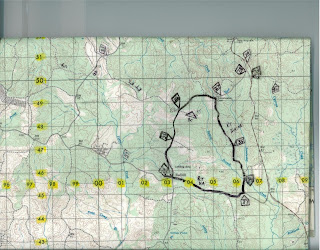Tuesday, September 30, 2008
Triangle Plot
Index Value Plot
Scatterplot
Climograph
Sunday, September 28, 2008
Windrose
Population Profile
Bilateral Graph
Thursday, September 25, 2008
DOQQ
DEM
Friday, September 19, 2008
DLG
Thursday, September 18, 2008
DRG
Isopleth
Isopach
Wednesday, September 17, 2008
Isohyet
Sunday, September 14, 2008
Isotach
Infrared Aerial Photograph
Friday, September 12, 2008
Isobar Map
Thursday, September 11, 2008
LIDAR
Tuesday, September 9, 2008
Cartographic Animation
Statistical Map
Cartogram Map
Sunday, September 7, 2008
Doppler Radar
Isoline Map
Thursday, September 4, 2008
Proportional Circle Map
Choropleth Map
Tuesday, September 2, 2008
Hypsometric Map
Topographic Map
 Topographic maps display changes in relief (elevation and depression). They also show man-made as well as natural terrain features(ridge, saddle, river, hills, etc.). Map colors also represent data, such as vegetation. This map is interesting as it is one I used while in the Army. I high-lighted the yellow grid numbers as this helps in low light environments and you can still see the route and corresponding checkpoints drawn in black.
Topographic maps display changes in relief (elevation and depression). They also show man-made as well as natural terrain features(ridge, saddle, river, hills, etc.). Map colors also represent data, such as vegetation. This map is interesting as it is one I used while in the Army. I high-lighted the yellow grid numbers as this helps in low light environments and you can still see the route and corresponding checkpoints drawn in black.
Monday, September 1, 2008
Dot Distribution Map
Black & White Aerial Photo
Planimetric Map
PLSS Map
Subscribe to:
Comments (Atom)
